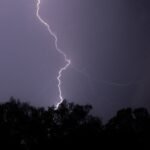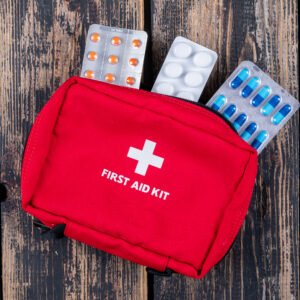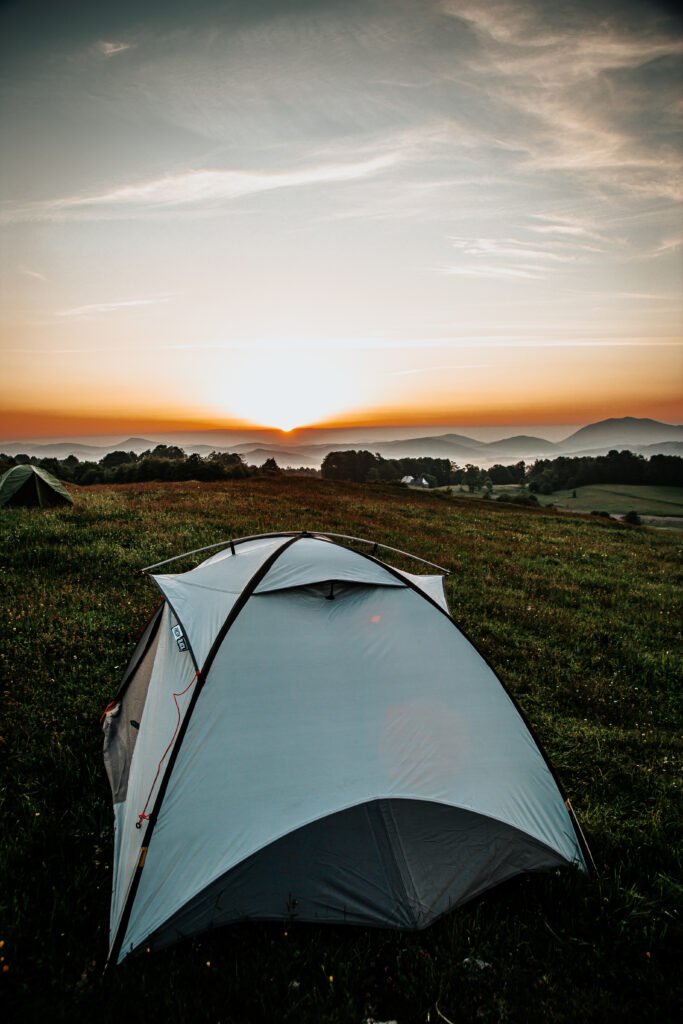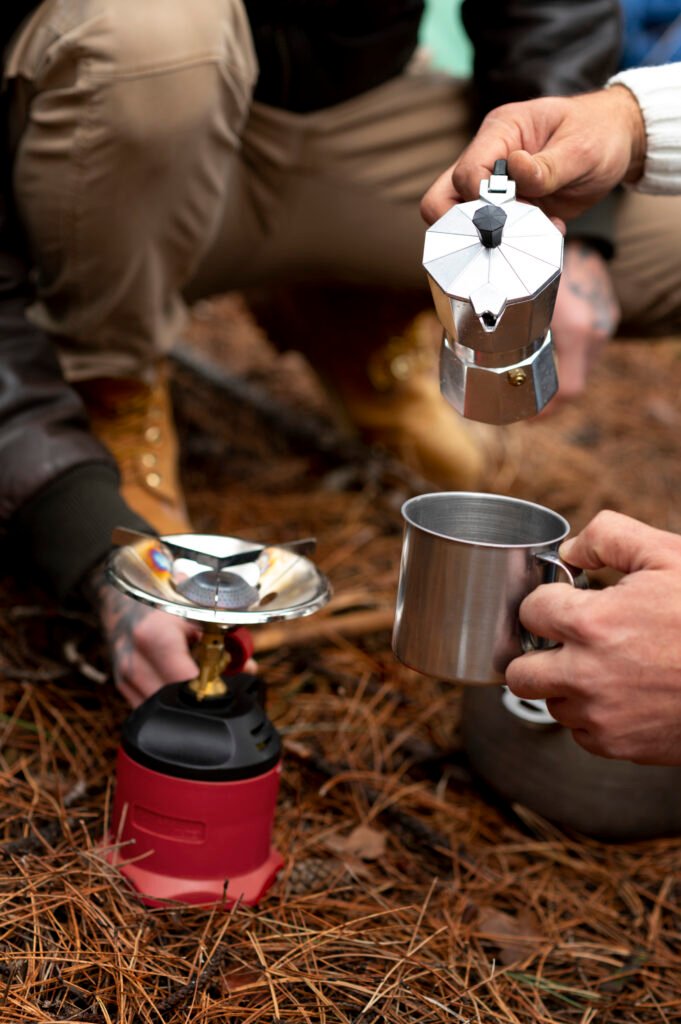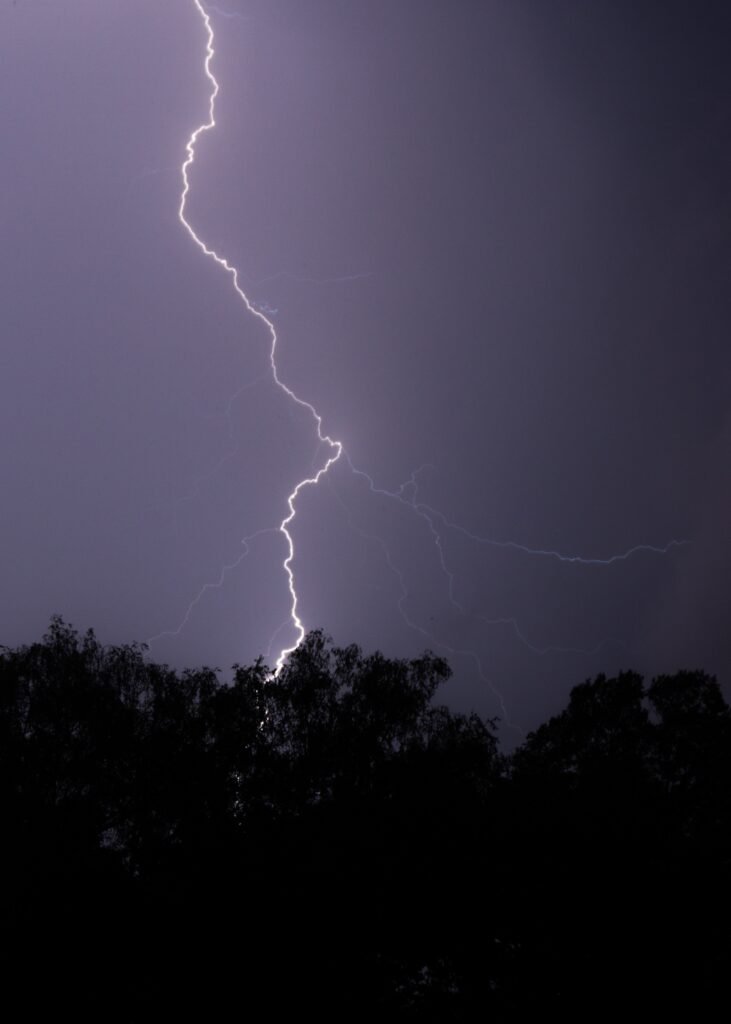The Ultimate Lightning Safety Guide for Campers and Hikers
Ever wondered what happens when you’re camping in a thunderstorm and lightning starts dancing across the sky? You’re not alone. Every year, thousands of campers face this terrifying scenario. Sometimes, a peaceful camping trip can turn dangerous within minutes.
Lightning safety while camping isn’t just about following basic rules. It’s about understanding nature’s most unpredictable force and making smart decisions that could save your life.
What is the science behind lightning strikes?
You’re enjoying a peaceful campout when dark clouds roll in. The air feels charged, the wind stirs, and—flash—lightning splits the sky. But how does it choose its target?
Lightning follows the path of least resistance, striking the tallest or most conductive points—trees, metal objects, hilltops, and sometimes campers. Storm clouds store massive electrical charges that need to discharge, and lightning is nature’s way of doing it.
The real danger isn’t just the strike—it’s the ground currents that can travel through wet soil for hundreds of feet. That’s why you can be at risk even if lightning doesn’t hit nearby.
Bottom line: zipping up inside your tent won’t fully protect you. Lightning safety starts with knowing how it behaves and picking your campsite wisely—away from isolated tall objects, open spaces, and high points.
Understanding this science isn’t just fascinating—it’s a key step in staying safe when storms find your campsite.
Why should you worry about lightning?
Every year, lightning kills about 20 people in the United States and injures many more. Out in the wild, there’s no real shelter from these electrical giants, which can burn at temperatures five times hotter than the sun’s surface.
That’s why camping thunderstorm safety is so important—especially when you’re far from help. A tent won’t protect you, and neither will a campfire. Even with careful planning, storms can arrive suddenly, turning a peaceful night into a dangerous situation.
The good news? Most lightning injuries are preventable. By learning how lightning works, picking safe campsites, and knowing what to do when storms hit, you can greatly reduce the risk. Lightning safety while camping isn’t about being afraid—it’s about being ready, so you can enjoy the outdoors with confidence.
Pre-Trip Planning for your safety during storms
Keep checking weather forecasts
Before heading out, consult modern weather apps that offer lightning probability maps. Review them multiple times in the lead-up to your departure. Remember, storm camping safety starts at home, not in the wilderness. Sometimes, delaying your trip can be a life-saving decision. Seasoned backpackers and lightning safety enthusiasts often share stories of near-misses that could’ve been avoided with better planning.
Choose your campsite wisely
Safe camping in lightning storms hinges on smart site selection. Where you pitch your tent can make all the difference. Stick to these guidelines:
🚫 Avoid High-Risk Areas:
- Hilltops and ridges
- Open fields or meadows
- Near lakes, rivers, or streams
- Beneath isolated tall trees
- Close to metal structures or fences
✅ Seek Safer Zones:
- Dense forests with trees of uniform height
- Low-lying areas (steer clear of flood zones)
- Spots with natural windbreaks
- Established campgrounds equipped with lightning rods
A popular thread on Backpacking Light shared the story of a hiker who survived a lightning strike by choosing a campsite in a dense forest instead of an exposed meadow. The surrounding trees absorbed multiple hits, but the uniform canopy helped disperse the electrical energy safely.
Critical Safety options during the storm
The 30-30 Rule
Here’s the math that might save your life:
- Count seconds between lightning and thunder.
- Divide by 5 — that’s how many miles away the strike is.
- If it’s under 30 seconds, seek shelter immediately.
- Wait 30 minutes after the last thunder before heading out again.
Simple and effective.
Emergency Position during Lightning
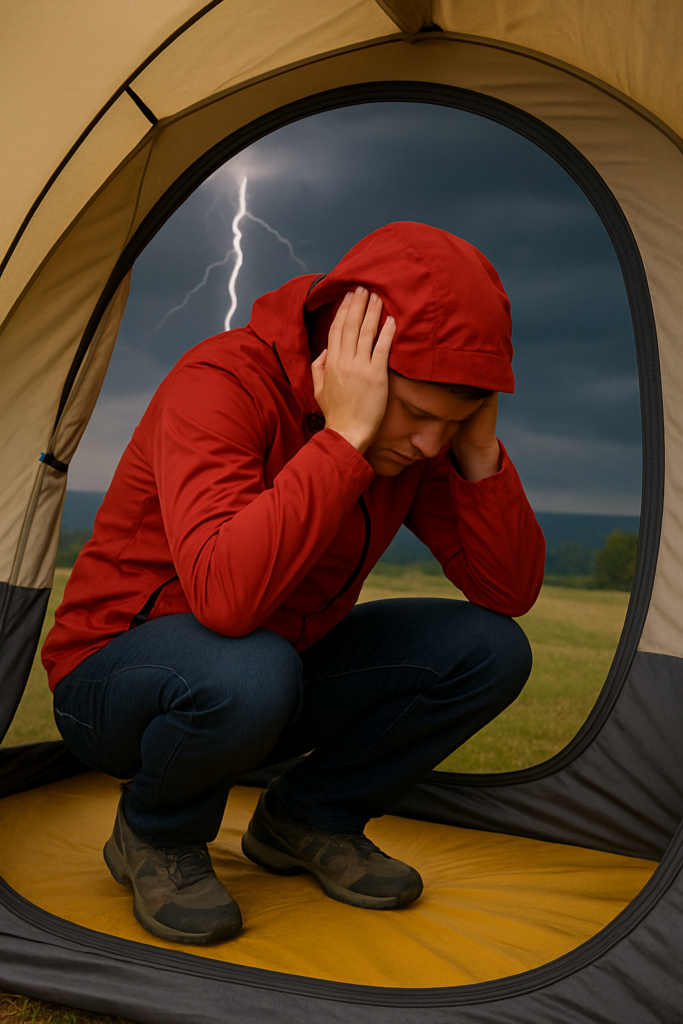
- Stay away from metal objects
- Stay away from backpack if it has metal frame
- Keep feet together
- Crouch low on the balls of your feet
- Cover your ears with hands
- Don’t lie flat on the ground
This position minimizes your profile while reducing the risk of ground current. Tent camping during a thunderstorm survival situation sometimes requires leaving your shelter for this position.
Do tents provide lightning protection?
Tents do not provide reliable lightning protection because most tents are made of synthetic materials that do not provide shielding against electric currents. The poles might conduct electricity. Your sleeping bag won’t insulate you from a direct strike. Even experts note that touching metal objects during storms can burn you, making tent poles very risky and dangerous. While some specialized tents may include grounding features, they’re not substitutes for proper site selection.
For safe camping in lightning storms, choose low-lying areas for pitching your tents with uniform tree cover and avoid exposed terrain.
RV and Vehicle Camping Safety
If you are RV camping in your vehicle during storms, then it provides excellent safety.
Car camping safety tips include staying inside your vehicles and not touching any metal surfaces. It is best to keep the windows closed and avoid using any electronic devices.
Common Lightning Safety Myths Busted
Rubber shoes provide protection: FALSE. No place and trick is 100% safe and works. Thin rubber soles cannot help block thousands of volts from a lightning strike.
If it’s not raining, Lightning cannot strike: A dangerous misconception. Lightning can travel up to 10 miles from a storm, sometimes striking under clear skies. This “blue-sky lightning” kills people every year.
Lightning never strikes the same place twice: FALSE. Lightning can and does hit the same place repeatedly.
What experienced Campers said?
On a camping forum recently, a camper recounted a night they’ll never forget. They were tucked inside their tent when a blinding flash lit up the sky—lightning had struck a tree just 50 feet away. Moments later, they felt a strange tingling on the ground beneath them. It was the ground current, traveling silently through the wet soil and right into their tent.
Another seasoned camper shared an equally chilling moment. While hiking, they noticed the fine hairs on their arms slowly lifting. They knew the sign—electrical charge was building nearby. Without hesitation, they dropped into the lightning safety position, staying low and minimizing contact with the ground.
When to evacuate or shelter in the same place?
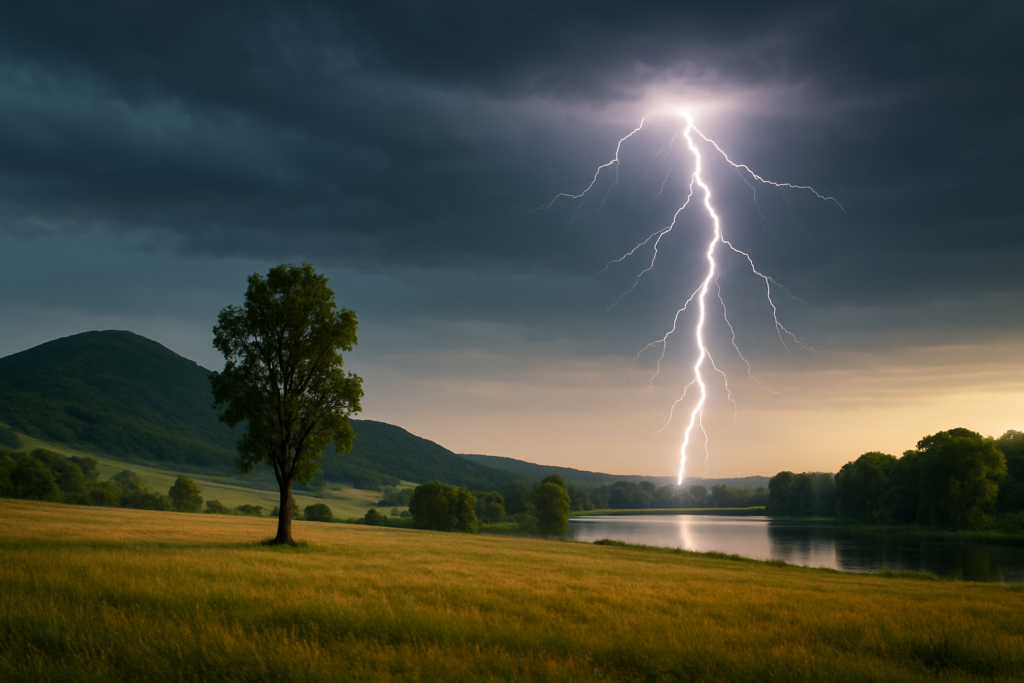
Evacuate immediately if
- You’re in high-risk areas like hilltops, open fields, near water, or under isolated tall trees
- You hear thunder within 30 seconds of seeing lightning (the “30-30 rule”)
- You’re near metal structures, fences, or exposed ridgelines
- You’re in a tent pitched in an unsafe location
Shelter in the same place if
- The storm is directly over you, and if you move out, it increases your risk
- You are already in a safe campground with dense forest
- Evacuating would expose you to more risks if you are crossing an open terrain
Storm Preparedness Camping Plan
Every camping trip needs this plan
- Identify safe zones to to pitch your tent
- Keep monitoring weather
- Pack appropriately for any emergency situations like weather radio
- Establish communication by informing your plans and return timelines with your friends
- Review and practice safety guidelines with your camping group
Essential gear for lightning prone areas
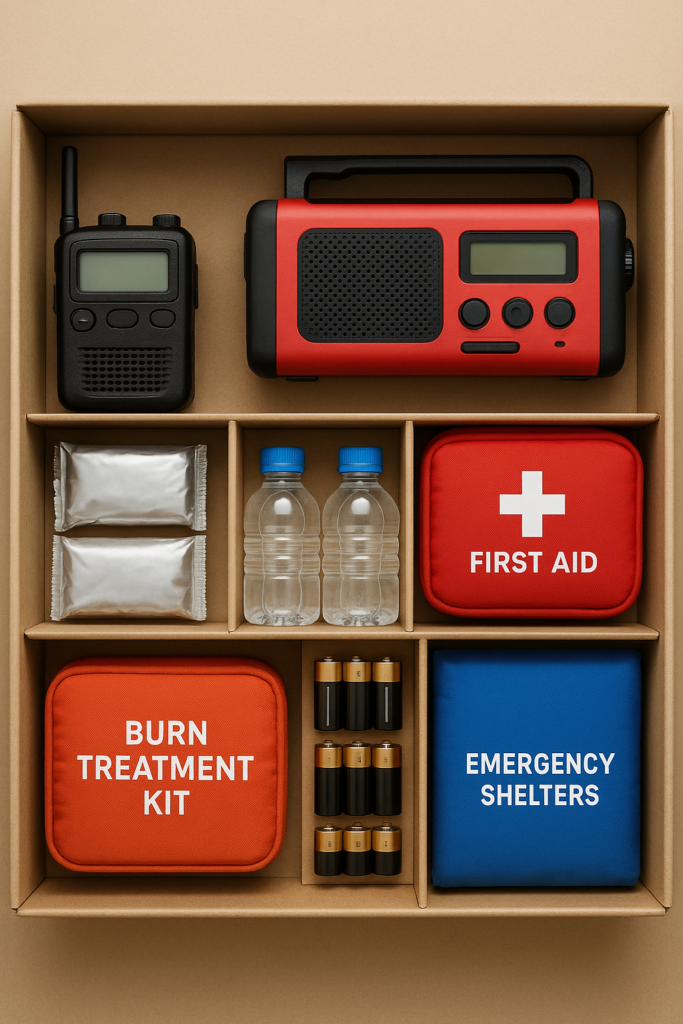
- Backup communication devices
- Weather Radio
- First Aid Kit
- Emergency food and water for extended days
- Extra batteries
- Burn treatment Kit
- Emergency Shelters
- Waterproof matches/ Fire Starters
Post Storm Safety Considerations
- Avoid standing water near electrical poles or electrical damage
- Checking your surroundings for damaged trees or structures that might fall
- Inspecting camping gear if damaged
- Avoid flooded areas because they may hide sharp debris or downed electrical wires
- Check whether you have lightning-related injuries like burns and call for help if needed
Final thoughts
Camping safely in lightning-prone areas comes down to three key factors: respect for nature, thorough preparation, and knowing when to make the smart decision. Lightning doesn’t wait, and it doesn’t offer do-overs. Sometimes, just following a few important steps can make your trip very memorable by avoiding all the dangers.
Most experienced campers have a story about getting caught in a storm. The reason they’re okay? They knew when to change plans instead of pushing on. Camping safely isn’t about being brave—it’s about staying aware and going with the flow.
Remember, camping is about making great memories, not playing the hero in a lightning storm. Pack wisely, plan carefully, and if the skies turn stormy, it’s perfectly okay to press pause. Nature will still be there tomorrow, and so will your adventure. Choose days that invite you in, not ones that put you to the test.
Plan smart and Camp Safely!



